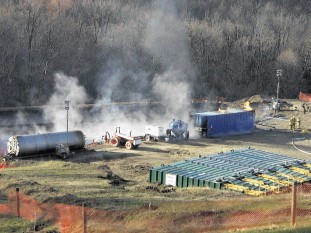
The growth in total US dry natural gas production will come from the increased development of shale gas and tight oil plays, according the the country’s Energy Information Administration.
Natural gas resources in tight sandstone and carbonate formations (often referred to as tight gas) also contribute to the growth to a lesser extent, while production from other sources of natural gas such as offshore, Alaska, and coalbed methane remains relatively steady or declines.
Shale and tight oil plays now makes up about half of the US. total dry natural gas production, according to EIA figures.
Production from shale gas and tight oil plays is projected to grow from about 14 trillion cubic feet (Tcf) in 2015 to 29 Tcf in 2040, making up 69% of the 2040 total dry natural gas production.
This category includes natural gas produced from shale formations as well as from tight oil plays, which are low-permeability sandstones, carbonates, and shale formations.
The specific plays included in this category are the Sanish-Three Forks (part of the Bakken), Eagle Ford, Woodford, Austin Chalk, Spraberry, Niobrara, Avalon-Bone Springs, and Monterey formations.
Tight gas production is the second main contributor. Although supply from these resources increases by 31% from 5 Tcf in 2015 to 6.6 Tcf in 2040, its share of total dry natural gas production remains relatively constant.
In recent years, because of improvements in drilling technology and abundant domestic resources, natural gas production has continued to grow despite relatively low natural gas prices.
Demand is expected to rise for natural gas in the industrial and electric power sectors and growth in exports of liquefied natural gas are likely to place upward pressure on domestic natural gas prices.
Drilling technology improvements that are expected to continue through 2040 will help production keep pace with demand (both domestic consumption and exports), resulting in relatively stable natural gas prices throughout the projection period.
Other scenarios to be released in the coming weeks include different assumptions about future world oil prices, macroeconomic growth, resource estimates, and technology costs that will affect projected natural gas production and consumption.
Recommended for you
